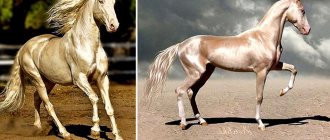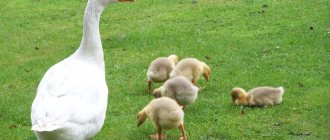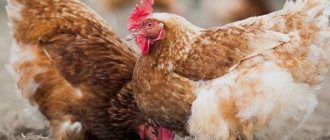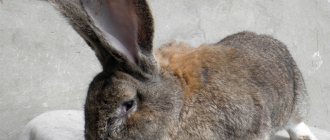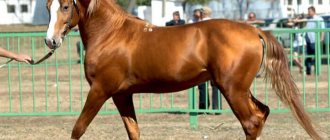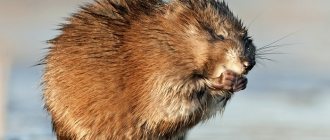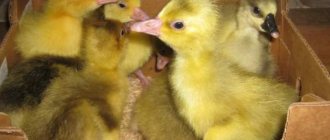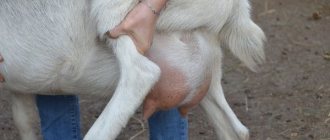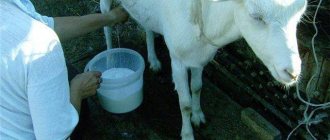Origin story
Long before our era, people began to think about domesticating different types of animals. The goals were different - dogs were used for hunting and protection, while the horse became an excellent transport and assistant on the farm. In our region, the breeding of domestic goats began long before the selection and breeding of horses - almost 10 thousand years ago.
As in all cases, the ancestor of the modern domestic version of the animal lived in the wild. In our case, these were mountain goats, which are still found in the mountains of the Caucasus and Asia. It was the Asian tribes that were the first to domesticate this animal. Several hundred years later, the ancient Greeks came to this.
This was an excellent decision, since the goat adapted well to different conditions. Thanks to its small size, it was easy to feed it - it was enough to give it simple food, or take it to the grass that grows near the settlement.
Goats grow up to one meter in height and up to one hundred kilograms in weight, and therefore even children and teenagers could care for them.
Toggenburg goats
Another ancient Swiss goat breed was named after the canton of Toggenburg, where it developed and was historically maintained since the 18th century. Over time, the Toggenburg dairy goat has given rise to several European breeds. And her blood is in the population of Russian, British and Czech goats.
If we compare the animals of this breed of goats with the Saanen goats, the latter are much larger. The weight, for example, of the Toggenburg goat is 60 kg, and its relatives from Saanenthal are 15–30 kg heavier. The color of goats is predominantly brown in various shades with white markings on the legs, ears and head.
The Swiss animals described are odorless breeds of dairy goats, which is important for obtaining not only healthy, but truly tasty products.
The Toggenburg goat breed shows decent milk production. A goat can produce up to 1000 liters of milk during 260–300 days of lactation per year.
Males and females
You should not keep a goat with goats in the same pen or goat shed. This is not advisable unless you want the milk you get from your goats to have an unpleasant odor. It comes from goats, which have a very unique smell.
It is good for young animals to have a separate room or pen in which they will spend the growing period together, after which they will live with the rest of the goats.
During times when you don't have a new addition, this room can be used either for quiet animal care, or for slightly problematic goats. Before moving the kids there, you need to thoroughly clean and disinfect it.
Goals of keeping and breeding mini goats
Many people perceive mini goats as decorative animals, but in addition to aesthetic pleasure, they bring products. West African goats are bred for their meat. The milk productivity of this breed is low; all the milk, as a rule, is spent on feeding the offspring.
The main product obtained from Cameroonian goats is meat. But Nigerian goats, on the contrary, are famous for their good milk production (up to 3.6 liters per day). Moreover, their milk has a number of unique properties:
- when kept in a cold place, it does not sour within 10-14 days;
- even outdoors retains its properties for several days;
- It is absorbed better than cow milk and does not have a specific taste or smell.
In addition, the fat content of milk can reach 10% and it contains immunoglobulin, vitamins A and B, potassium and cobalt. The milk yield and fat content of the product are influenced by the goat’s diet and housing conditions. Due to the high fat content of dairy products, you can get a lot of cheese from them.
A by-product of keeping dwarf goats can be their soft wool for knitting mittens, socks and other warm clothes. However, due to the fact that miniature animals are not very fluffy, even with regular clipping, it is impossible to obtain the amount of wool necessary for full production.
Another option for keeping mini goats is breeding work for subsequent sale to producers.
Goat nutrition
Feeding and care affect the animal's lifespan - this is true for any livestock. How long your domestic goats will live depends only on their care and nutrition.
They spend quite a lot of time in a closed space, and therefore you must provide the right diet so that they are healthy and produce enough tasty and healthy milk.
Note!
Chicken - description, types, classification, nutrition and maintenance of domestic chicken (115 photos and videos)Fretka - lifestyle, care and character traits. 115 photos and videos tips for keeping a pet ferret
- Sheep - lifestyle, description of breeds, habitat, feeding and care of sheep when growing (145 photos and videos)
When it's summer outside, it would be good to either bring them fresh grass or take them for a day to where it grows. For the winter, you need to prepare enough hay to feed your goats - they need up to three kilograms per day.
In addition, in winter it is good to add special food to the diet, which will strengthen the immune system and give the animal the necessary vitamins and minerals. The food must be fresh, just like the hay, because there is a difference in what to feed domestic goats.
Goat breeding
Goats come into heat early, at the age of 3 months it is important to protect them from the goat - the most suitable age is 1.5 years and above.
A properly formed goat produces full-fledged large kids and high milk yield, despite the first calving.
If, nevertheless, an early covering of a goat occurs, then one cannot expect milk yield from such a goat, and the kids are born weak and often do not survive.
Goat breeding
The milk of domestic goats has long been considered healthy and nutritious, but this is not the only reason why these animals are raised. The same is said about their meat - dietary and nutritious. Don't forget about wool, which was especially valued thousands of years ago.
Over the years, certain types of goats have been bred that are better suited for collecting wool or raising milk. The latter have become noticeably more popular, which is not surprising, given that wool is not so in demand now.
If you create a large farm, dairy goats can become an excellent source of profit, because their milk is now significantly more expensive than cow's milk.
Dairy breeds
If a breeder is counting on tasty, fresh milk, he will have to decide on a dairy goat breed. The main evaluation criteria are high milk yield, unpretentiousness in care and maintenance, and the absence of a specific odor from the pet and its products. Below are the most popular breeds.
Scientists claim that goat milk eliminates the symptoms of poisoning, treats allergies, and accelerates positive dynamics in tuberculosis. In addition, it provides reliable protection against radiation exposure.
Saanen
This is a European goat breed native to the Swiss Alps. Polled animals reach 85 cm at the withers and weigh 75-80 kg. There are cases when the weight of Saanen goats reached 90 kg. Representatives of the breed have a proportional body, wide-set limbs, a short tail, and erect ears. The color of the short coat is snow-white; cases of black spots cannot be ruled out.
On average, a goat produces up to 700 kg of milk with a fat content of 3.5-7% per year. Record annual milk production is known - 2,000 kg. A goat gives birth to 2-3 babies at a time, which is considered a high indicator of fertility.
Advantages:
- lactation all year round;
- lack of a specific odor from milk;
- high fertility, productivity;
- strong immunity.
Flaws:
- whimsicality to living conditions;
- high price;
- frost intolerance.
Megrelian
Goats are native to Georgia. A distinctive feature of the breed is its compact size. At the withers the animal reaches 60 cm and weighs no more than 30 kg. The dwarf goat has a powerful chest, a long body, erect ears, an elongated muzzle, and a short tail. The animal is short-haired, fur color is all shades of brown. There are also white specimens.
During the lactation period (200 days), the Megrelian goat produces 350 liters of odorless milk with 3.2% fat content. In winter, milk production decreases, which is due to dietary habits. At lambing, the female gives birth to up to 2 kids.
Advantages:
- strong immunity;
- good adaptive performance;
- high viability;
- odorless milk;
Flaws:
- moderate milk yield;
- high price of the breed;
- difficulty of purchase.
Toggenburg
Another goat breed comes from Switzerland. The animal belongs to the meat and dairy breed - in addition to milk, it provides the breeder with tasty, dietary meat. These are smooth-haired, polled goats with erect ears, an elongated muzzle and a beard (in males). At the withers the animals reach 70 cm and weigh 50 kg.
Toggenburg goats are brown in color with white accents, and there are also long-haired varieties of the breed. Milk yield is 500-1000 liters per year. Milk does not have a specific smell.
Advantages:
- high milk yield;
- strong immunity;
- good adaptive performance.
Flaws:
- high price;
- difficulty of purchase.
Russian white
This is a European dairy breed with high productivity. Goats have a massive body, short legs, ears set apart, and short white hair. There are individuals with horns and a beard, or polled. At the withers the animal reaches 60 cm and weighs up to 30 kg.
The Russian White goat is known for its high milk yield. During the lactation period, you can get up to 800 liters of milk with a fat content of 5-6%. Daily milk yield is 3-5 liters.
Advantages:
- high fertility;
- valuable skin;
Flaws:
- degeneration of the breed;
- goats have a conflicting nature;
- risk of morbidity.
Gorkovskaya
These are European goats - a mixture of Saanen and Toggenburg breeds. The animals have a compact body, well-developed muscles, small horns and tail, and widely set limbs. Like their parents, Gorky goats are richly white, up to 70 cm at the withers, and weigh 50-60 kg.
Milk production indicators are moderate. During the lactation period, a goat produces 500-600 liters of milk with a fat content of 5%. The value of the product lies in the absence of a specific odor and high protein concentration per 100 g of product.
Advantages:
- fast acclimatization;
- aesthetics of the breed;
- strong immunity;
Flaws:
- moderate milkiness;
- heat intolerance;
- danger of ticks, fleas, and other parasites.
Lamancha
The historical homeland of La Mancha is Ancient Persia. A distinctive feature of the animals is the absence of ears, which gives them an unusual, decorative appearance. Goats have a strong build and a wide range of colors, including spotting. At the withers, Lamancha reaches 95 cm and weighs up to 65 kg.
During the day, a goat produces up to 8 liters of milk with 5-6% fat content. La Mancha has tender, dietary meat; lambs can produce up to 4 babies. Raising this breed of goats is cost-effective; difficulties arise with the conditions of care and maintenance.
Advantages:
- high fertility;
- strong immunity;
- decorativeness of the breed;
- high milk yield;
- fat milk.
Flaws:
- difficulty of purchase;
- high price;
- scrupulousness in care.
Alpine dairy
This breed of dairy goat originates from France. The animals are large in size, reaching 90 cm at the withers. Females weigh 60 kg, males - 80 kg. These polled goats have an attractive color - all shades of brown up to black are unevenly distributed.
Alpine goats produce 700-800 liters of milk per year without a specific odor, but record holders are also known - up to 1000 liters. The fat content of the product is 4-7% depending on nutritional characteristics.
Advantages:
- excellent exterior;
- high milk yield;
- frost resistance;
- flexible character;
- resistance to diseases.
Flaws:
- sensitivity to poor quality water;
- high price;
- difficulty of purchase.
Cameroonian
This is a dwarf goat breed. At the withers, the animals reach 45 cm, females weigh up to 15 kg, males - 25 kg. In purebred individuals, the coat is light brown with darkening in different parts of the body. Black Cameroon goats are also found.
You can get 2 liters of milk with a fat content of up to 6% per day. There is no specific smell, but the usefulness of the drink is difficult to overestimate. Milk contains phosphorus, calcium, potassium, and iron.
Advantages:
- compact size;
- calm character;
- strong immunity;
- high milk yield.
Flaws:
- intolerance to dampness, drafts;
- aggression in a stressful situation;
- sadness when growing alone.
Czech brown
This is the most popular breed in Russian agriculture. Goats tolerate cold well, and productivity does not decrease when climate conditions change. The young quickly gain weight. Czech brown goats are used to produce not only fatty milk, but also meat products.
The daily milk yield is from 3 to 5 kg with a fat content of 5-6%. The milk production of the Czech breed is maintained all year round, depending on the conditions of keeping and feeding characteristics of the goats.
Advantages:
- high productivity;
- nutritious milk, dietary meat;
- balanced character;
- high intelligence of the animal.
Flaws:
- heat intolerance;
- danger of harmful insects;
- risk of morbidity.
Malaguena
A rare breed of goats obtained by crossing the Maltese and Iberian breeds. The height of the animals at the withers reaches 75 cm, weight – 65-80 kg. The Malaguena is short-haired, brown in color with horns and polled.
The lactation period lasts 310 days. The milk yield is 1350 kg per year. Milk is healthy, the fat content is from 4 to 7%. Goats have high fertility - up to 4 kids per lamb.
Advantages:
- aesthetics of the breed;
- ease of care;
- high productivity rates;
- strong immunity;
- fast acclimatization.
Flaws:
- difficulty of purchase;
- high price;
- little information about the breed.
Dairy Goat Comparison Chart
When choosing dairy goats, pay attention to these milk production indicators. Not only the annual level of milk yield is of significant importance, but also the fat content of the milk and the usefulness of the natural product.
| Breed | Daily milk yield, l | Annual milk yield, l | Milk fat content, % |
| Nubian | 4-5 | 1 000 | 4-7 |
| Gorky | 3 | 600 | 3,5 |
| Russians | 2-3 | 500 | 3-4 |
| Cameroonian | 2 | 300 | 1,5 |
| Czech | 5-6 | 1 200-1 300 | 4,5 |
| La Mancha | 3-5 | 900 | 4-6 |
| Toggenburg | 2-3 | 600 | 3-4 |
We recommend you see an overview of the best breeds of dairy goats in this article.
Photo of a domestic goat
Cameroon dwarf goats
Small goats from Cameroon have become widespread not only in their homeland, but also in a number of European countries due to their modest size, record unpretentiousness and decent quality of milk and meat. If you believe the legend, then dwarf goats came to the Old World on the ships of fishermen and pirates. The animals were so non-capricious that they easily endured many months of voyages, moreover, supplying the crew with milk and fresh meat.
Today, the animal's popularity is supported by the fact that it is a breed of odorless dairy goat. The meat of goats of this breed does not have an unpleasant aftertaste.
Alpine goat breed
The alpine regions of European countries have historically developed their own varieties of dairy and meat-and-milk goats. All these animals are distinguished by their rapid adaptation to new conditions, unpretentiousness, high productivity and gracefulness characteristic of mountain breeds. At the beginning of the last century, American breeders set themselves the goal of obtaining a goat breed that would combine all the positive aspects of the Alpine population of domestic goats.
According to photos and descriptions of the Alpine goat breed, animals from Switzerland, France, Italy and other countries of the continent took part in its formation. As a result, goats received a very extensive set of genes, expressed, for example, in the variegated coloring of babies born to alpine goats.

